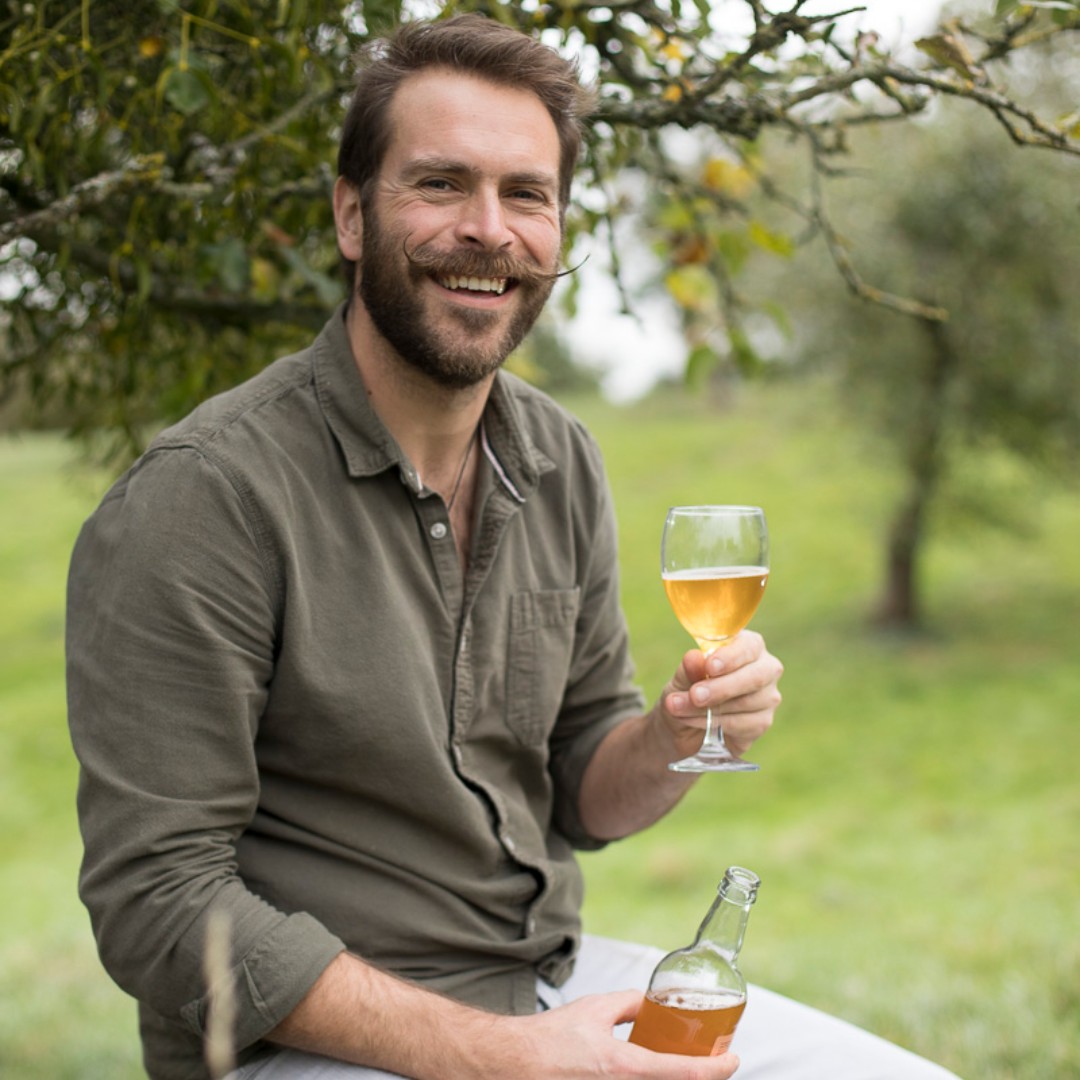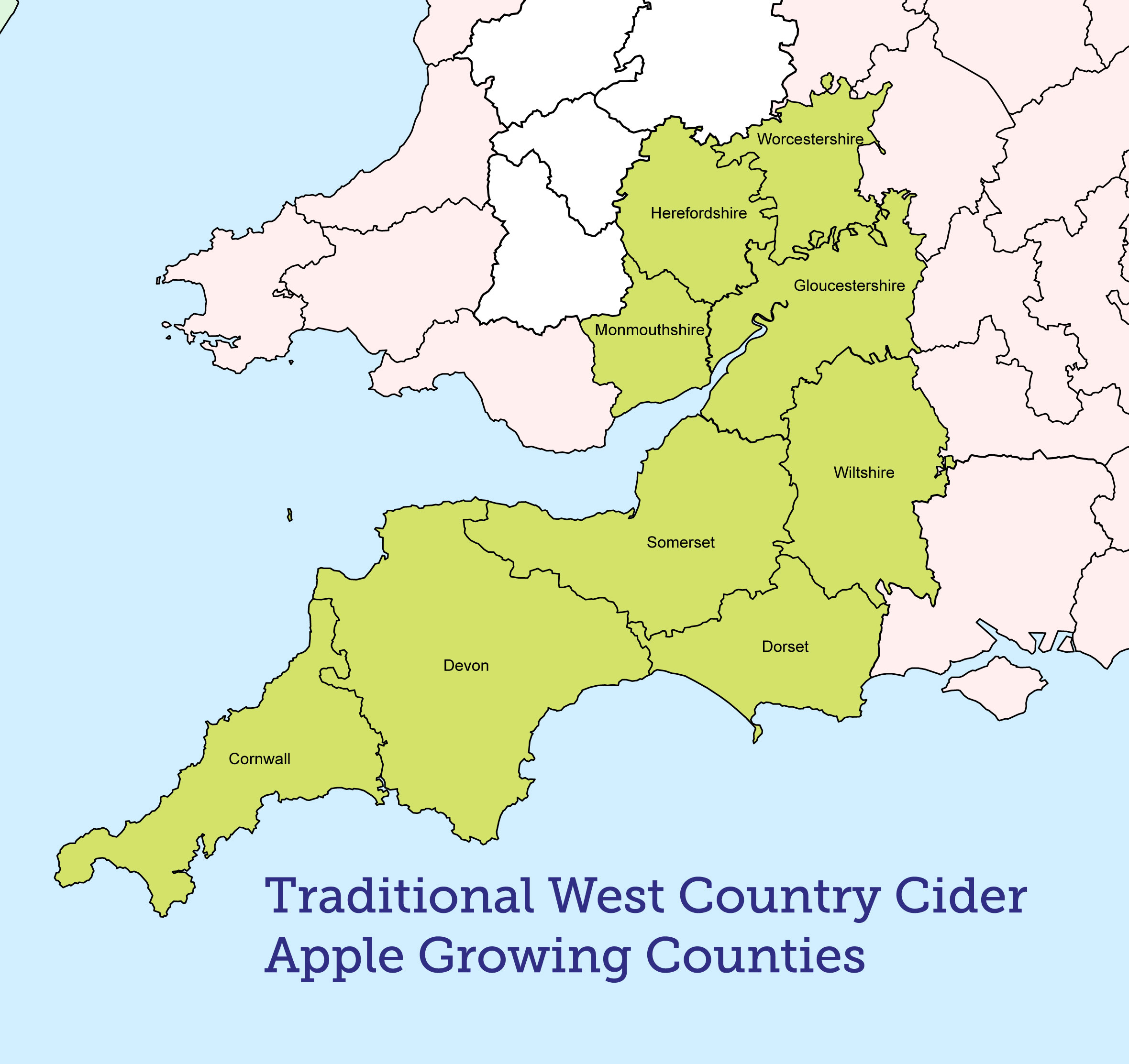Learn & Discover
Learn & Discover
How cider is made: I
Fruits and orchards
It’s so easy to enjoy cider and perry it can be easy to forget just how much hard work and magic go into our favourite drinks. With a little knowledge and armed with some fascinating new facts you can start to hone your appreciation of cider and perry to the next level.
In the first installment of his series on how cider is made Gabe Cook takes us on a short tour of cider producing regions. Gabe profiles the fruit grown there and guides us through the features and characteristics that cider apples and perry pears lend to the drinks we so enjoy.
Gabe Cook
With 10+ years of experience working in the cider industry, Gabe is leading the charge for a cider revolution. AKA ‘the Ciderologist‘ Gabe is an international consultant, writer, broadcaster, and educator on all matters cider. Resident cider expert for C4’s Sunday Brunch. Gabe also chairs the International Cider Challenge.
Cider is made from fruit
Cider, just like orchards and the apple varieties that they contain, is an incredibly considered process.
At every step, a cider maker will make decisions that will determine what type of cider they will create and the very first decision is what kind of apple will they use. For we must not forget that cider is made, just like wine is made.
There is no brewing associated with cider, where heat and water are the primary constituents and agents. Therefore, just like with wine making, the primary factor that determines the overarching profile of any cider is which variety (or varieties) will be used, and their inherent flavours, properties and characteristics.
The choice of which apples to use is often determined by a regional culture and heritage, by climatic conditions or (as is so often in life) simply what is easily available to utilise.
Primary constituents
All apples have the same primary constituents and it is the relative proportions of these constituents that determines the broad classification of the apple and what kind of cider it will produce. These primary constituents are:
– Acid
– Tannin
Don’t be concerned that ‘acid’ sounds dangerous or unapproachable, it simply means ‘sharp’. It is the natural malic acid in apples that gives zingy, crisp characters, experienced when biting into a Granny Smith apple, for example, and these characters will be transferred into the ciders, too. It is acidity that helps to enhance freshness and fruitiness and is the bit the slakes one’s thirst on a hot summer’s day.
Tannin, on the other hand, provides characters at the other end of the spectrum. Here we are talking about earthiness, bitterness and astringency — a mouth drying sensation. Very often, ciders made from tannin apples, but also contain a lot of sugar, so they are referred to as being ‘dry’ due to the high levels of astringency negating the impact of the sugar. Tannins often coat the inside of the mouth, giving a feeling of texture or mouthfeel, sometimes referred to ‘chewiness’.
Consideration should also be given to the sugar content within an apple, as this will determine the amount of alcohol the resultant cider will contain. Why? Well, it’s simple. As you will see in Part 2 of this series, the fermentation process involves the conversion of these natural sugars contained within the apples, into alcohol by the action of yeast. In most circumstances, yeast will convert all of the natural sugar in the apples into alcohol. Therefore, the more sugar in the apple, the higher potential alcohol level – simple!
Apple families
There are two broad families of apples that are utilised to make cider in the UK:
West Country Cider Apples
This is a group of apples that have been selected and grown in Western parts of England, and over the border into Wales, for at least 500 years. They are though to be the ancestors of classic French ‘cider’ apples brought over to the UK post-Norman invasion.
The culture of using these tannin rich apples found a home in the Western region that spans from the Welsh Marches at its Northern extreme and runs down through the Cotswold and Mendip Hills, Somerset Levels and Moors to Devon, Dorset and Cornish valleys at its Southern most end.
Hundreds of West Country cider apples have been identified, selected and grown over the centuries, with well over 100 in common use still today, some rarer than others. The soils, topography, relative mildness and precipitation levels makes this broader region suited to growing these types of apple, although these varieties are now grown all over the UK and all over the world, in such far flung places as Australia, New Zealand, Japan, USA and Canada.





